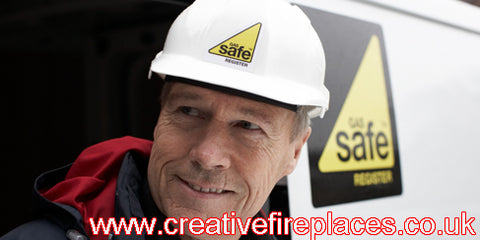Building A Gas Fire Surround Rebate
Gas fires are arguably the most common type of inset fire option in the UK at present. With natural gas piped to almost every home in the UK, it is not surprising why gas fireplaces are extremely popular. There are certain alterations that can be made to a gas fire to ensure it is as easy as possible to install. The below article will examine the key points you should be aware of when ordering a gas fireplace surround.Guide to Gas Fire Surrounds
1. A fire surround is made up of several components, including:
(a) The fireplace hearth (base section)
(b) The back panel (section where fire is recessed)
(c) The surround (two columns and a header)
(d) The mantle
(e) And lastly the inset gas fire 

2. All fire surround that are used with gas fires must be made from non-combustible materials (such as marble, granite, limestone or slate). Timber fire surrounds are suitable if they are accompanied with a stone back panel and hearth
3. The fireplace rebate is the distance from the back of the wall to the front of the back panel. Ideally the fireplace rebate should be 25mm and the back panel should be pushed as far back to the wall as possible. Essentially this only gives you a 5mm void, as the thickness of the back panel also needs to be subtracted from the total void (as it is fitted behind the surround). Hence a 25mm rebate -20mm back-panel = 5mm void
4. If a gas fire is supplied with a large rebate (75mm or 100mm) then your fitter would need to fill the back of the back panel with suitable non combustible material, and this is time consuming and can be expensive. Many gas fitters would even walk away from a job like this, as there is a high risk of a gas leak if something was to go wrong 


